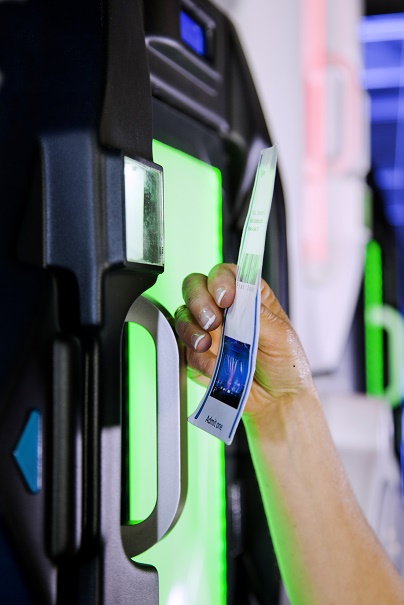In our quest to connect everything to the Internet, we are entering a new phase of incorporating machine learning and big data analytics to glean insights and improve decision making.
Product designers, innovators and consumers alike are busily breathing life into traditionally ‘dumb’ products that have existed in our lives for decades. One industry poised for transformation with the advent of Industrial Internet of Things (IIoT) and machine-to-machine (M2M) is the entry operations and security industry.
The tools and machines used by security personnel and entry staff at theme parks, monuments, stadiums and transportation hubs help them greet, validate and screen millions of people and their belongings each year. What IIoT brings to these teams is a new way to simultaneously enhance the experience of the guests that pass through their doors, streamline operational processes, and improve the overall security posture of their establishment says, Yair Dolev, VP marketing and product management, Qylur.
Current security-screening measures for soft-target threats may not be completely broken, but few would argue there isn’t room for improvement. For example, recent TSA test findings made public show a large percentage of explosives and weapons were not detected by TSA representatives at dozens of US airports. To address this concern and improve security processes, airports and some other large public venues have been increasingly adopting more sophisticated technology.
The advent of the intelligent machine, while not a security-screening magic bullet, allows for several factors that could enhance the way we perform security. With an IBM Watson-style machine supporting humans, some tasks can certainly be performed much better. Machines can scan thousands of bags and analyse them without fatigue, taking into account hundreds of parameters in a quick and repeatable way. Leveraging that, humans can focus on things that machines simply cannot do today. Things such as assessing a person’s suspicious behavior. What you get is a “best of both worlds” result. But isn’t this already being done at places like airports and monuments? The short answer is no.
Qylur Intelligent Systems uses machine learning and connected machines to provide self-service bag-screening that improves user experience and increases personal safety at the world’s highest volume public venues, including airports, monuments, stadiums and theme parks.
Qylur’s IIoT solution, the Qylatron, is a kiosk composed of five compartments, each of which can simultaneously screen for dangerous objects or substances undetectable to the human eye and even current technology methods. The data generated from one machine is then shared with other Qylatrons around the world as part of a “social network of machines,” which is where IIoT plays a big role These machines evolve their capabilities by learning from both its own experiences as well as those of neighboring “friends” and other matching systems. For example, a Qylatron at a stadium in California may be tapping into data collected by a Qylatron at a stadium in Europe to analyse shared patterns to expand its knowledge of ever-evolving threats – with each machine “getting smarter” with every interaction.
Even with such powerful machine-learning technology detecting new threats daily across the globe, there is still no substitute for human intuition which can sense threats that technology cannot. Although security technology continues to innovate, a physical, human aspect is still vital for an optimal security experience. Humans still have the advantage of life-long experience with objects, allowing them to suspect and detect a huge variety of items that may fall under what’s prohibited. Machines, even in the best of cases, can still refer only to what they have been trained to recognise. In another example, machines are not well-suited to detect suspicious behavior. For airport screeners, if a person acts suspiciously before entering an airport security checkpoint, a proper security protocol would be to perform additional screening with that person. This human observation, coupled with the acute attention to millions of minute details that can be recognised by advanced IIoT and M2M technology, will deliver the optimal entry-point experience.
According to a recent report by DHL and Cisco, there will be approximately 50 billion connected devices by 2020. Qylur is one example of an industry disrupter using intelligent, connected machines to transform industry – in this case, the security and entry operations industries – but the core technology will make a major impact across other industries as well, from healthcare to industrial automation. The rise of the intelligent machines is here to stay, but we humans will not be replaced anytime soon. Together, the combination of man and machine will transform the way we all live, work and play.
The author of this blog is Yair Dolev, VP marketing and product management at Qylur.
Comment on this article below or via Twitter: @IoTNow_ OR @jcIoTnow











